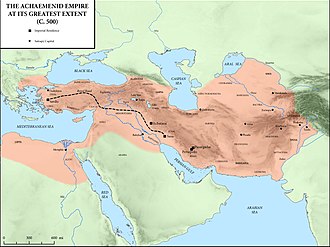

The Apadana hoard is a hoard of coins that were discovered under the stone boxes containing the foundation tablets of the Apadana Palace in Persepolis. [1] The coins were discovered in excavations in 1933 by Erich Schmidt, in two deposits, each deposit under the two deposition boxes that were found. The deposition of this hoard, which was visibly part of the foundation ritual of the Apadana, is dated to circa 515 BCE. [1]





